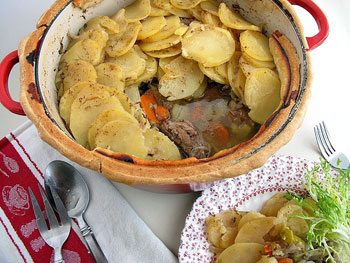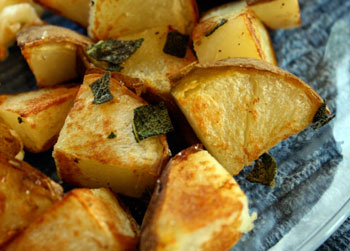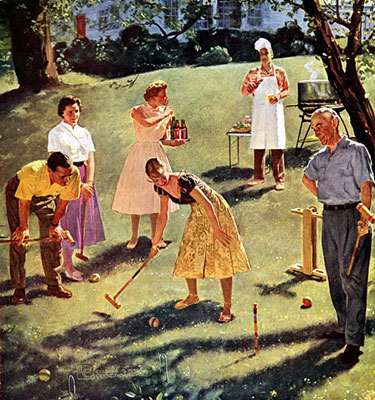 A Monte Cristo consists of ham, turkey or chicken, and Swiss cheese sandwiched between two slices of white or challah bread that is dipped in an egg batter, then grilled or fried in butter until golden brown. It is often dusted with confectioners’ sugar and served with a side of red currant jelly.
A Monte Cristo consists of ham, turkey or chicken, and Swiss cheese sandwiched between two slices of white or challah bread that is dipped in an egg batter, then grilled or fried in butter until golden brown. It is often dusted with confectioners’ sugar and served with a side of red currant jelly.
The Monte Cristo is an American version of the Croque-Monsieur, the famed French grilled cheese and ham sandwich that is fried in clarified butter. The sandwich first appeared on the menu at Gordon’s, a restaurant on Wilshire Boulevard in Los Angeles, but it didn't get its big break until Disneyworld got involved. When the Blue Bayou Restaurant in the Pirates of the Caribbean put the Monte Cristo on its menu, its popularity soared.
I hadn't eaten a Monte Cristo since I was a kid, and I didn't remember particularly loving it. My, how things have changed. This sandwich has it all: it's sweet, salty, and chewy. It's addictive.

 When I think of casseroles, I imagine layers and layers of meats and
vegetables slowly cooking together until fork tender. Baeckeoffe is
that casserole; it beats all other casseroles. Beef, lamb, and pork are
combined with onions, leeks, and carrots, then drowned in wine, and
slowly braised for hours in the oven until just perfect. Baeckeoffe,
which translates to baker's oven, originates from Alsace, France, a
region that has changed hands many times between France and Germany. In
many ways, especially gastronomically, it maintains a German identity.
Here you will find beer, sausages, sauerkraut, and vineyards growing
typical German grapes like Riesling and Gewürztraminer. Many dishes are
specific to this region, Baeckeoffe being one of its most famous
traditional foods.
When I think of casseroles, I imagine layers and layers of meats and
vegetables slowly cooking together until fork tender. Baeckeoffe is
that casserole; it beats all other casseroles. Beef, lamb, and pork are
combined with onions, leeks, and carrots, then drowned in wine, and
slowly braised for hours in the oven until just perfect. Baeckeoffe,
which translates to baker's oven, originates from Alsace, France, a
region that has changed hands many times between France and Germany. In
many ways, especially gastronomically, it maintains a German identity.
Here you will find beer, sausages, sauerkraut, and vineyards growing
typical German grapes like Riesling and Gewürztraminer. Many dishes are
specific to this region, Baeckeoffe being one of its most famous
traditional foods. If you’re looking for a more sophisticated dessert to impress your friends at your next dinner party, try this Austrian classic. America’s Test Kitchen updated the recipe and it’s pretty easy to do.
If you’re looking for a more sophisticated dessert to impress your friends at your next dinner party, try this Austrian classic. America’s Test Kitchen updated the recipe and it’s pretty easy to do. I found the secret to the crispiest, most delicious home fries.
I found the secret to the crispiest, most delicious home fries.
 There used to be this hole-in-the-wall place in Hollywood serving these super-juicy out-of-this-world burgers. Cheese and kraut were literally melting and dripping down the sides as well as my fingers and chin. I swear these burgers were messier than a Tommy's burger, and that's saying something. I used to frequent this place when I was interning for an entertainment company right across the street from the old Grauman's Chinese Theater.
There used to be this hole-in-the-wall place in Hollywood serving these super-juicy out-of-this-world burgers. Cheese and kraut were literally melting and dripping down the sides as well as my fingers and chin. I swear these burgers were messier than a Tommy's burger, and that's saying something. I used to frequent this place when I was interning for an entertainment company right across the street from the old Grauman's Chinese Theater.
